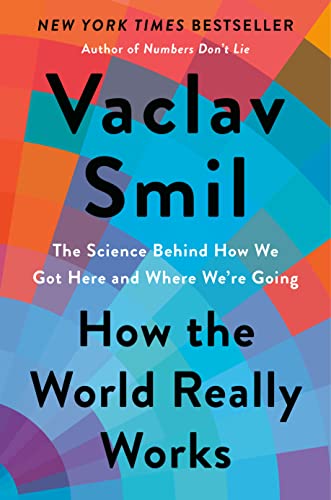How the World Really Works
- Author: Vaclav Smil
- goodreads page
Summary
In the book, the author shares a lot of science behind our past and our future about energy, food production, globalization, and our environment. He discusses the pillars of our civilization, our dependency on fossil fuels, and global warming, to give awareness and understanding about our future.
It is an imperative reading if you are fond of science and you want to get the numbers to understand our world and its future.
I discovered this book through a Bill Gates recommended reading video and became really interested in it. After finishing this book, I was looking forward to reading another book from the author, Numbers don’t lie.
Key Takeaways
-
The Four Pillars of Modern Civilization: Our world runs on ammonia (for fertilizers), steel, concrete, and plastics - all heavily dependent on fossil fuels and nearly impossible to replace at scale in the near term.
-
Energy Transition Reality Check: Transitioning away from fossil fuels will take much longer than optimistic predictions suggest - decades rather than years - due to the massive scale of existing infrastructure and energy density advantages of fossil fuels.
-
Food Production’s Hidden Dependencies: Modern agriculture is essentially a way of converting fossil fuels into food - from fertilizer production to machinery to transportation - making our food system vulnerable to energy disruptions.
-
Globalization’s Material Foundation: Our interconnected global economy depends on massive material flows that most people don’t see - billions of tons of raw materials, manufactured goods, and energy carriers moving across the planet annually.
-
Risk Assessment vs. Risk Perception Gap: We systematically misunderstand risks - fearing relatively safe technologies (like nuclear power) while accepting genuinely dangerous ones (like fossil fuel combustion that kills millions annually through air pollution).
Cover
